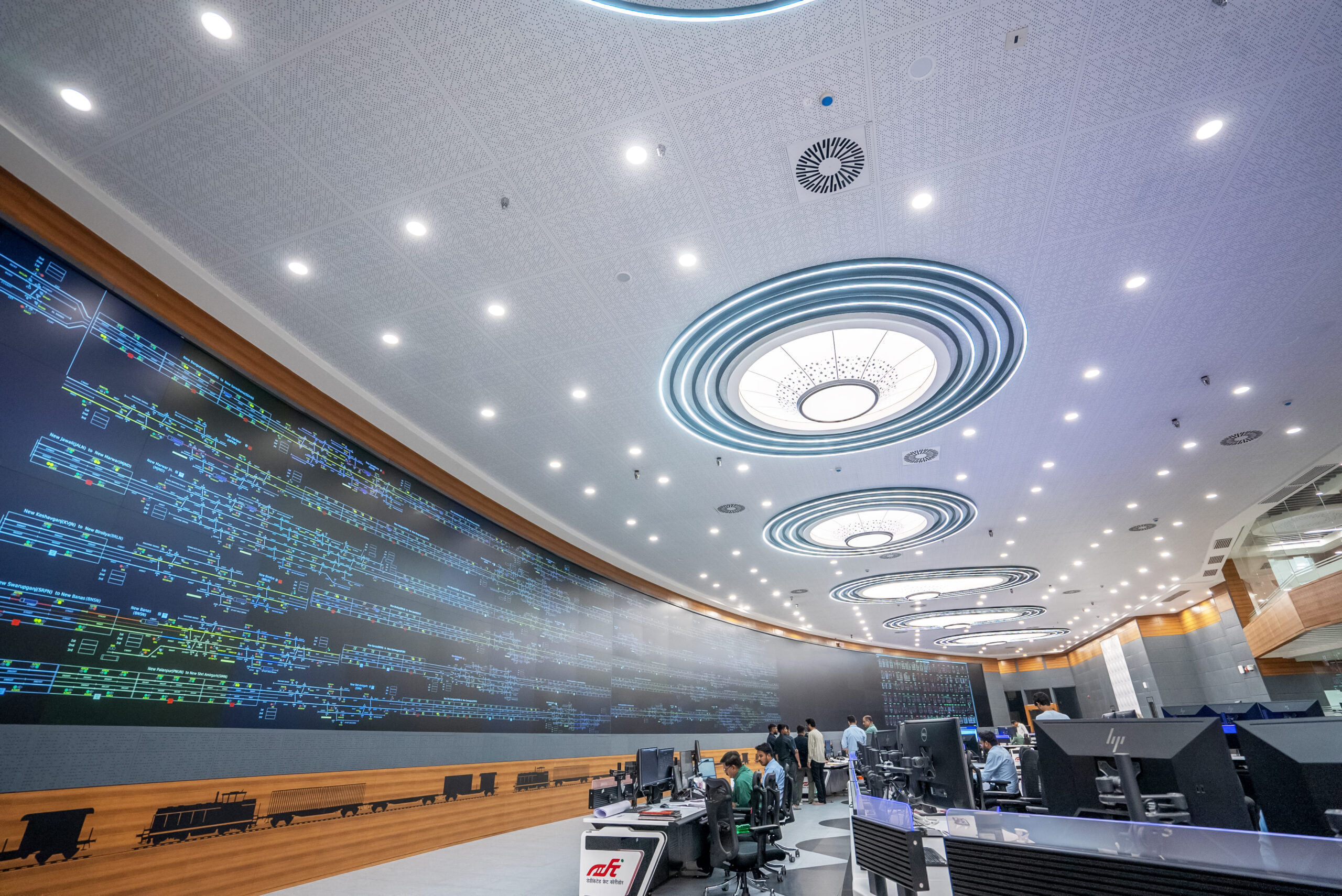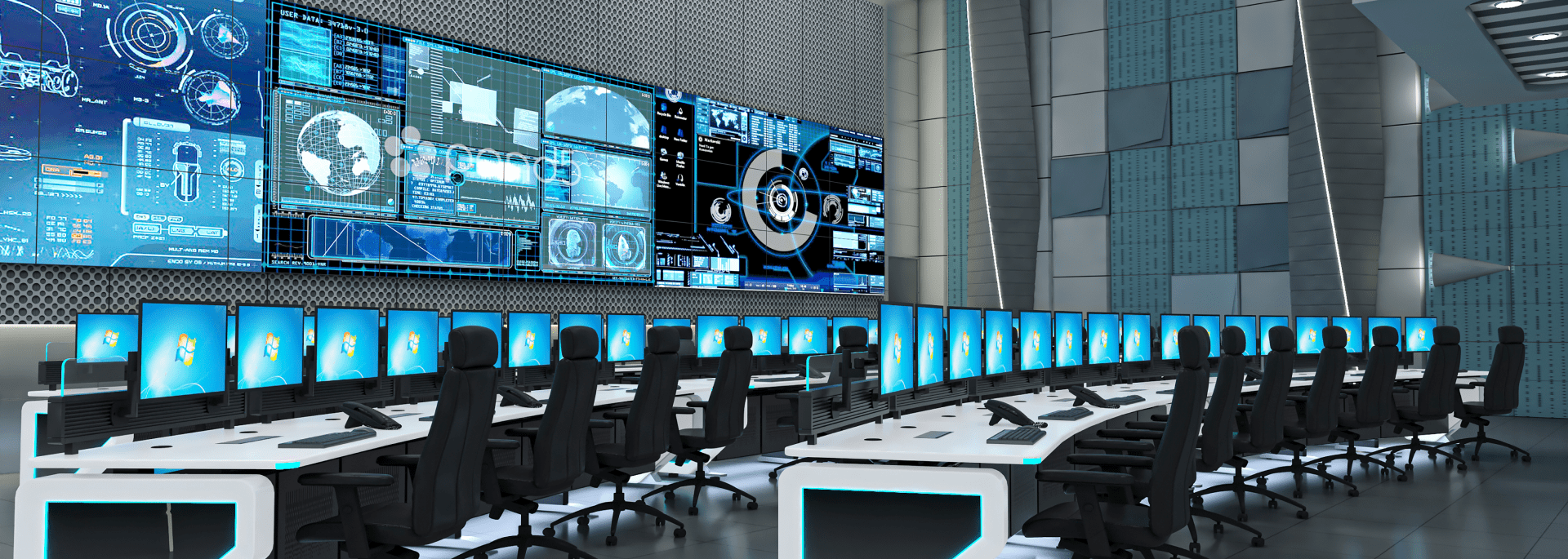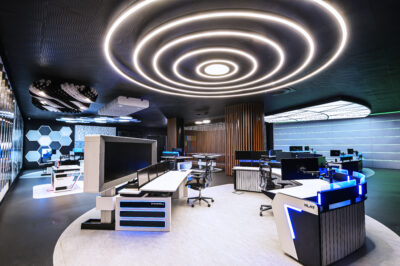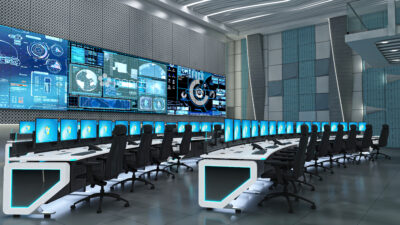
Innovative Control Room Interior Designs for Modern Operations.
In the fast-evolving landscape of technology and operations, the security control room plays a pivotal role in ensuring seamless monitoring and management. As industries like oil & gas, telecom, and aerospace advance, the need for sophisticated control room design becomes increasingly apparent. Modern control room infrastructure is not just about high-tech equipment; it’s about creating a space that enhances efficiency, safety, and comfort for operators.
The Importance of Control Room Design:
Control room design is crucial in mission-critical environments where operators must manage complex systems and respond to emergencies promptly. A well-designed command and control center can significantly improve operational efficiency and decision-making processes. By integrating ergonomic furniture, these rooms can reduce operator fatigue and enhance situational awareness.
In mission-critical environments such as oil and gas, telecom, and aerospace sectors, control room design plays a pivotal role in ensuring smooth operations and quick, effective responses to emergencies. Operators in these environments are often required to monitor and manage multiple complex systems simultaneously. Therefore, the layout and functionality of the control room are essential to their performance.
Ergonomic furniture is a key component of a well-designed control room. By providing operators with comfortable and adjustable seating, workstations, and equipment, ergonomic design helps to minimize physical strain and fatigue. This is particularly important during long shifts, where operator alertness and comfort directly impact their ability to perform tasks efficiently and accurately.
Key Elements of Control Room Infrastructure:
1. Ergonomics: Ensuring that workstations are adjustable and comfortable for operators who may spend long hours monitoring systems.
2. Scalability: Designing spaces that can adapt to future technological advancements and growing operational needs.
3. Redundancy: Implementing fail-safe systems to ensure continuous operation during equipment failures or other disruptions.
4. Security: Enhancing physical and cybersecurity measures to protect sensitive data and operations.
Innovative Design Trends:
Modern control room design incorporates several innovative trends to create a more efficient and effective command center environment:
• Open Space Layouts: Promoting better communication and collaboration among team members.
• Acoustic Treatments: Reducing noise levels to minimize distractions and improve focus.
• Sustainable Materials: Using eco-friendly materials and energy-efficient systems to reduce environmental impact.
Applications Across Various Sectors
• Mission Control Center: Used in aerospace for launching and monitoring space missions, where precision and real-time data analysis are critical.
• Emergency Operation Center: Crucial for coordinating responses during natural disasters, security threats, or other emergencies.
• Network Operations Center: Vital in the telecom sector for monitoring network performance and addressing outages swiftly.
FAQ
Q1: What is a security control room?
A: A security control room is a centralized facility where operators monitor and manage security systems, ensuring the safety and security of an organization’s assets and personnel.
Q2: Why is control room design important?
A: Control room design is essential because it impacts the efficiency and effectiveness of operators. A well-designed control room enhances situational awareness, reduces fatigue, and improves decision-making.
Q3: What are the key elements of control room infrastructure?
A: Key elements include ergonomics, technology, scalability, redundancy, and security.
Q4: What innovative design trends are being used in modern control rooms?
A: Trends include open space layouts, ambient lighting, acoustic treatments, and sustainable materials.
Q5: How do control rooms differ across various sectors?
A: Control rooms in different sectors, such as mission control centers, emergency operation centers, and network operations centers, are tailored to meet specific operational needs, from monitoring space missions to managing emergency responses and network performance.
Q6: What is a command and control center?
A: A command and control center is a facility where strategic and operational decisions are made and executed, often using real-time data and advanced technology to manage and coordinate various activities.






No Comments